#both which ties into the characters backstory AND the greater story and the message its presenting as a whole i love it so so much
Text
i feel bad that my friendly neighborhood had to release a week before the ruin dlc, its such a wonderfully and carefully crafted game with a beautiful story and character/level designs, just so much thought put into it across the board and it truly does justice to its concept, but now its gonna be lost in the onslaught of fnaf hype and not properly appreciated <:/
#god i love stuff with thought and themeimg and this game has it in spades#without spoiling it gives reasoning as to why your player character has no option but to carry out a life threatening task#*such a#AND the natural weapons proficiency that the average person doesnt have#both which ties into the characters backstory AND the greater story and the message its presenting as a whole i love it so so much#*both of which#i promise its not your average mascot horror#go check it out if you havent!! i know dawko 8 bit ryan and fusionzgamer covered it right before fnaf but there are likely others#my friendly neighborhood#mfn#mfn game#dawko#8 bitryan#8 bit ryan#8bitryan#indie games#fusionzgamer#indie project#indie promo
284 notes
·
View notes
Text
stop and un-remember this
Step away from the echo chambers of twitter and tumblr, and set aside the pockets of the internet where reviews live. Most of a show’s viewing audience -- hell, the vast majority of the US -- doesn’t reside in those places.
For the casual viewers who make up the silent majority of almost every viewing audience, there’s minimal interest in any convention circuit, or interview, or much of anything outside Netflix’s selections. (This is one reason for having reviews and interviews showing up in a half-dozen venues, to try and grab as many low-engagement viewers as possible.)
What that means is that, for the majority of viewers who are not as plugged-in as the core fandom, the story exists only as it’s shown on their screens. So let’s step back from JDS’ and LM’s ex-canonical explanations, and look at how the story appears when taken solely on its own merits.

Behind the cut: five things the story doesn’t explain, and how the actual narrative might appear to a casual viewer.
1. Shiro has a degenerative disease; while perhaps not terminal, it does sound inevitably debilitating.
This is quite a bombshell, and it’s never mentioned again. Nothing in the story offsets or contradicts what Shiro -- or anyone else -- says in S7E1 about how much longer he’s got.
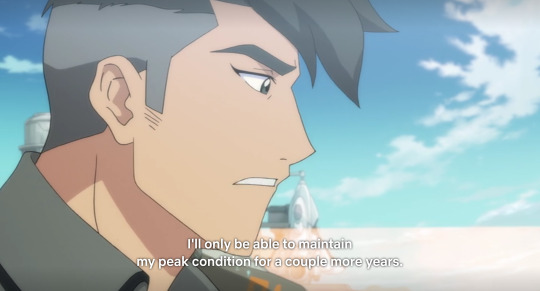
SHIRO: I’ll only be able to maintain my peak condition for a couple more years.
This is underscored by the series’ use of timeframes (to a greater degree than any previous season). We know Shiro spent a year as a prisoner, and from Pidge’s later comment about ‘four years’, we can deduce it’s been another year since then, plus a magical three-year timeskip in the return to Earth.
That means that for casual viewers, the season is shadowed by this assumption that Shiro has an expiration date -- and it’s not that far off in the future.
2. Keith inexplicably stops pressuring Shiro to take position as Black Paladin.
Nothing is said anywhere as to why Shiro is no longer tied to Black nor the Black Paladin. The closest we get to even a nod in that direction is when all but the five current paladins are frozen, in S7E6.
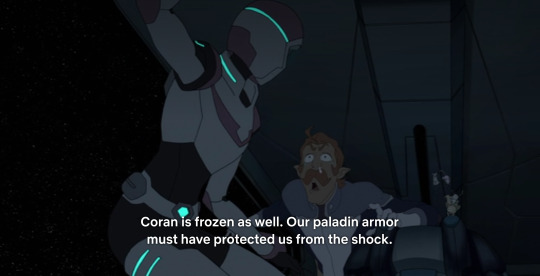
ALLURA: Coran is frozen as well. Our paladin armor must have protected us from the shock.
The problem is Shiro’s wearing armor, too, and he’s also frozen. That single line (and his exclusion from the bulk of that episode) seems to stand in for the message that Shiro is no longer a paladin.
At the same time, S7 had a complete absence of any protest from Keith. We’ve had 50+ episodes of Keith insisting -- even when all evidence pointed to Shiro’s death -- that Shiro remained the Black Paladin.

KEITH: Shiro is gone. He was the Black Lion.
A casual viewer might decide Keith’s silence in S7 meant Keith realized he’d been wrong all along. That in fact, the mantle of Black Paladin passed to Keith upon Shiro’s “death,” and the clone taking Black was another indication of the clone’s wrongness. That is, the clone stole Shiro’s memories and appearance, and Keith’s position as Black Paladin.
3. Shiro’s physical abilities are downgraded significantly.
Most of the fight scenes across S7, Shiro does little, if he’s even present at all. Krolia lampshades this by saying Shiro’s still recovering.

KROLIA: No, you’re still recovering. I’ll do it.
And in the last stretch of S7, Shiro’s contribution amounts to telling other people what to do; his previous physicality is reduced to acting as a conduit for Sam to hack his brain. And finally, Sendak defeats Shiro easily, compared to S1 where Shiro fought him to a draw.
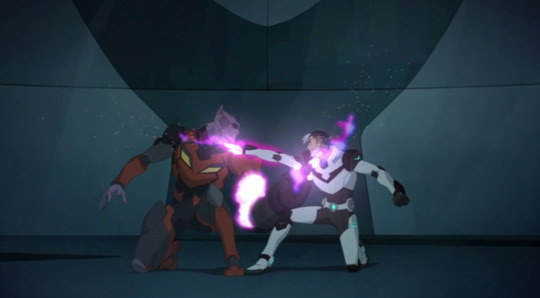
A casual viewer might thus assume Shiro himself chose (offscreen) to refuse Black’s position, between adjusting to a new body and the last stages of a genetic disease (since a clone with identical memories would reasonably also have identical physical aspects).
4. Shiro has the clone’s body, but not the clone’s memories.
In S7E1, the high-drama element is whether his awareness can fix itself to an unfamiliar body. Shiro calls out the clone-situation only once.
SHIRO: Well, I'm sorry, Lance, but I guess having my consciousness transplanted from the infinity of Voltron's inner quintessence into the dead body of an evil clone of myself has left me a little out of sorts for the past few weeks.
Later, Shiro mentions his “disappearance,” and says dealing with the long dark passage alone required adopting routines. He never references any events that happened during his absence. The narrative is pretty clear, so it’d be reasonable to conclude the two had completely separate experiences, and Shiro has none of the clone’s memories.
In short: Kuron was evil, is now dead, and has no further influence on events.
5. While we’re at it, a casual viewer might be unaware of the intended subtext of Shiro’s relationship with Adam.
Yes, yes, I’ve seen all the arguments that say it’s supposed to be coded as romantic, but it’s full of contradictions that create a certain ambiguity. For one, they’re in the officer’s club, with other people present. Second, although Adam asks what he means to Shiro, his next line could imply a long-term partnership of a military kind.
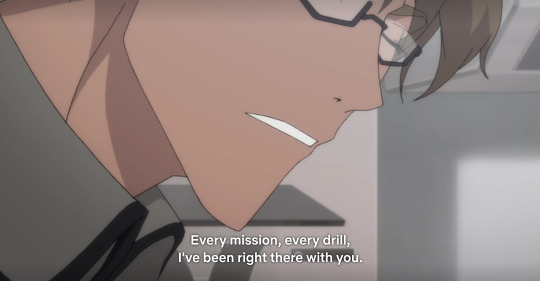
ADAM: Every mission, every drill, I’ve been right there with you.
Although the EPs/writers seem to put family together to a frightening degree that a modern military would never condone --- Matt and Sam on the mission to Kerberos, Veronica going with Lance to the battlefield --- that’s just not the assumption the average person is going to make.
In writing, you always put last what you want to stick in the reader’s mind. The order here leaves room for viewers to skip over any implications in the first line to linger on the second, which could be ambiguously platonic. A viewer not actively looking for queer representation could interpret this as Adam being afraid for his best friend, and possibly a bit jealous at being left behind.
At no point -- in that first episode, or later, when Shiro learns of Adam’s death -- does anyone speak of their relationship. Nowhere does Shiro even put a word to it. If casual viewers had already coded them as best friends or near-brothers, Shiro’s grief is still comprehensible and relatable. In some ways, the platonic aspect of other pop-culture bromances (ie Bucky Barnes and Steve Rogers) are just as strong, with mourning just as severe.
Honestly, there was more in a few lines’ exchange between Ezor and Zethrid to indicate a romantic relationship than there was in all of the Shiro/Adam interactions or references. “I’ll always take care of you” and “that’s my girl” are pretty unambiguous, especially given the character designs (and previous interactions) make it pretty clear these two are not siblings.
And --- unlike with Adam and Shiro --- they’re storyboarded with a certain intimacy. They’re alone, and Zethrid gets in close in Ezor’s personal space, with Ezor neither pushing her away nor recoiling.
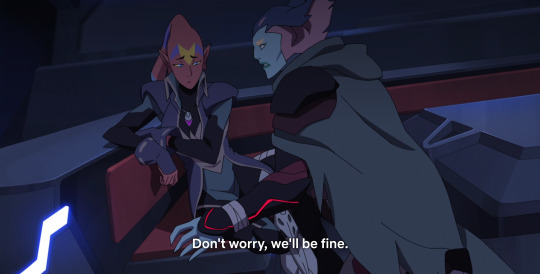
ZETHRID: Don’t worry, we’ll be fine.
If casual viewers had heard anything in passing about LGBT+ rep in VLD, it’s entirely possible they could’ve assumed this was the rep intended. Of course, both die in a fiery explosion not long after, but who’s counting.
in the absence of in-story explanation
It seems to me that a casual viewer --- lacking the EPs’ explanations --- might have found S7 somewhat confounding. Is Shiro now unable (or not allowed) to pilot Black because he occupies someone else’s body? Is Keith’s tacit appropriation of the Black Paladin mantle meant to signal the S4 handoff was a mistake? By virtue of his disease or his victimhood in Haggar’s schemes, is Shiro no longer qualified to be a paladin?
The season’s also full of characters framed as though we should care as deeply about them as we do about the core protagonists. Adam, Colleen, Iverson, Sam, and a dozen or more Garrison cadets and officers, all better trained, better disciplined, and better equipped than Voltron itself. They not only get two episodes of backstory (twice what Voltron itself got), they dominate most of the second half of the season.
Meanwhile, the protagonists struggle, needing Shiro to tell them what to do; they’re almost their own worst enemies more than Sendak is. Compared to the Earth forces who rally repeatedly, the Voltron team barely hangs in there. They need Shiro’s ultra-ugly oversized insta-mecha to intervene, before Voltron can get its act together long enough to strike the killing blow.
Honestly, it’s no surprise the first flush of audience reaction is so unhappy, if the majority were unaware of the EPs’ explanations. Almost all contradict point-blank what we see in the story itself:
Shiro’s disease was cured during his imprisonment or cured in the cloning process, but either way he’s fine, now
The clone was neither evil nor brainwashed, just basically Shiro doing his best until Haggar struck in late S6
Shiro and the clone are now merged consciousness, with Shiro retaining his memories plus that of the clone’s
Shiro’s link to Black has been permanently broken by Allura’s transfer; he’s no longer a paladin, full stop
Shiro and Adam were in a long-term relationship, either currently engaged or heading that direction, at the time of their breakup
None of that shows up in the narrative. None of it.
Lacking that ex-canonical information, it had to have felt as though the story’s expected trajectory was just thrown out the nearest window. Coupled with the extreme emphasis on an entirely new set of characters, I wouldn’t be surprised if casual viewers got the impression that S7 existed solely as setup for Voltron to gain a new and better set of paladins.
805 notes
·
View notes
Text
How Are Game Development Companies Adapting to Progressive Culture?
From Super Mario Bros 2’s Birdo in 1988 to Life is Strange’s Chloe in 2015, the gaming community is seeing a large influx of diverse characters in gaming. More and more game development companies are riding the wave of progressive culture, using it to normalize LGBT characters, embody progressive trends, and even target an audience that craves a greater representation of diversity. While these intentions are well-meaning, they have landed several companies in precarious positions and sparked controversy. This is especially likely to occur when character personalities and interactions are almost exclusively built upon diverse character identities.
These practices are known for stripping the character of any engaging, unique characterization, and replacing them with the ongoing insistence of their own racial and/or sexual identities. On the other hand, a subtly implied characteristic or light musing on someone’s queerness can serve as a building block to a tasteful, powerful scene, which could fiddle with a player’s heartstrings. These can definitely add another layer of character immersion to any story-driven title. But only if done right. Over the past 2 decades, we have a wealth of examples, including the good, the bad, and the (quite literally) ugly. Let’s look at how game companies have explored their own implementations of progressive culture, and pick apart how these experiments can make or break their final product.
We’ll start off with the ugly. Bioware is known for creating rpg titles with massive fantasy worlds, immersive characters, and impressive storytelling. Two big franchises come into mind when considering how Bioware has experimented with diverse characters: Dragon Age and Mass Effect. Both of these franchises contain huge open worlds and are well known for revolutionizing the fantasy and rpg genres, especially Mass Effect. Let’s focus on Mass Effect: Andromeda. This game was under controversy for an excruciatingly long time for its very forced, contrived messages about beauty expectations and portraying women especially.
Now, anyone looking at the game can tell what BioWare’s aim was with these characters. But at the same time, anyone looking at the game can understand that these characters came across as strange, unnatural-looking, and in many cases, just downright ugly and undesirable as playable character models. They could have made them look trendy and diverse in their own stylistic ways, but instead they made the models’ faces very bulbous and imperfect, deliberately so (BioWare and the Unfortunate Faces of Diversity). This video highlights how a lot of mainstream game development companies (particularly BioWare in this case) have reacted to feminist critiques of ideally drawn character models that attract the male gaze.
This has led them to change a lot of their models (especially the female ones) in the latest Dragon Age and Mass Effect to be much less flattering and suggest a closer fit to realistic standards, with more colored characters dragged in as well. These have actually led to a significant rise in girl gamers taking part in the Sci-Fi RPG genre, but with how blatantly terrible most female models look in Mass Effect: Andromeda, it’s unquestionable that this was a very rushed, desperate attempt to better fit progressive ideals (BioWare and the Unfortunate Faces of Diversity). This could have been handled much more tastefully.
Speaking of tasteful, let’s move onto some well done progressive adaptations from game companies. Characters are a massive driving force in RPG and adventure genres in terms of presentation and character development. Modern games have set the bar extremely high for presenting main characters. It’s basically a given that finished products must boast amazing character model designs, which is one of the things that seriously restricted the potential of the aforementioned Mass Effect: Andromeda. One of the best ways to build upon characters with diverse identities is to spill more of their personality into the plotline incrementally, especially during deeply emotional scenes.
Life Is Strange paved the way for this formula with its original game and crystallized it to an even greater level in the prequel, Life is Strange: Before the Storm. This adventure game is driven by a sequence of unique choices, each of which have ambiguous consequences that propel the story forwards. In Life is Strange: Before the Storm, the level of intimacy the protagonist develops with Rachel is stringently dependent on the player’s choices, giving the players a new sense of agency and liberty in their decisions (Favis). In a plotline that transitions through motifs of enduring grief, dread, and unpredictability, forming an unshakeable bond between two implicitly lesbian characters serves as a safe haven from surrounding chaos (Favis). Rather than presenting itself as a decision-making adventure title with queer themes thrown in irrelevantly (as many RPGs have failed doing), it fundamentally ties the intimacy between diverse characters into a very emotionally-invoking story of dreamlike proportions. Successful queer adaptations of characters can also be uncovered through little hints as a game progresses, which is the case for one of Gearbox’s most popular franchises: Borderlands.
Borderlands 2 serves as a popular example of how LGBT characters can be subtly implied, adding a quirky bonus to their personality without having their sexual identity be their sole defining characteristic. This game featured a couple of gay and lesbian characters, not in a very overt fashion, but just as a little cherry on top of their personalities, which grew as the player uncovered more of their backstories. Axton from Borderlands 2 was an inadvertent example of this LGBT character inclusion, but his bisexual identity was then later added upon through a DLC campaign to solidify his suggested queerness (Shaw). This was a nice addition to Axton’s chill, carefree spirit, and was built in as a subtle easter egg.
Sticking with Borderlands 2, we also have Tiny Tina who is suggested to be a lesbian character. Being a spontaneous, goofy, and fun-loving personality that she is, this is another great little spoon of sugar on top of an already iconic character, who often takes on the face of the game’s advertisement banners. She points her original reason for helping the protagonists towards her crush on Moxxi, another female character allied with the player, which ties together Tina’s motives and the secret of her identity in a pretty smooth fashion (Shaw). Both of these characters’ sexual identities are completely unknown to the player when they are presented, and are later uncovered through whisper-quiet clues to embellish the moving plotline and character backstories.
This, in a nutshell, is exactly the way in which a company should approach the inclusion of diverse characters, namely LGBT ones. These examples have taken great strides in normalizing the LGBT presence in modern game characters, tying diverse identity traits with their already-rich personas. The above examples share a common goal of having the player uncover these diverse aspects of characters themselves, rather than having progressive ideas or faces be a fundamental trademark of a title’s presentation. So, given how Life Is Strange: Before the Storm, Borderlands 2, and other games have successfully translated the changing progressive culture into video game themes, how will companies adapt to the need for diverse characters in the future? As long as these attempts at inclusion are done meaningfully, will the gaming community become more open to progressive game adaptations in the future?
Sources:
BioWare and the Unfortunate Faces of Div. Produced by Game Objective, YouTube, 2017, www.youtube.com/watch?v=v-0nCsE2zMA. Accessed 3 Dec. 2018.
Favis, Elise. "Opinion – Life is Strange: Before the Storm Is The Queer Love Story I’ve Always Wanted In A Game." www.gameinformer.com, Game Informer, 24 Nov. www.gameinformer.com/b/features/archive/2017/11/24/opinion-life-is-strange-before-the -storm-is-the-queer-love-story-ive-always-wanted-in-a-game.aspx. Accessed 3 Dec. 2018.
Shaw, Adrienne. "Axton in Borderlands 2." lgbtqgamearchive.com, LGBTQ Video Game Archive, 15 June 2018, lgbtqgamearchive.com/2018/06/15/axton-in-borderlands-2/. Accessed 3 Dec. 2018.
Shaw, Adrienne. "Tiny Tina in Borderlands 2." lgbtqgamearchive.com, LGBTQ Video Game Archive, 15 June 2018, lgbtqgamearchive.com/2018/06/15/tiny-tina-in-borderlands-2/. Accessed 3 Dec. 2018.
#gaming#progressive#lgbt#feminist critique#inclusion#life is strange#mass effect#borderlands#diversity#game developers
9 notes
·
View notes
Text
The Best Films of 2018, Part IV
Scroll down for Parts I, II, and III.
VERY GOOD MOVIES THAT STILL AREN’T TECHNICALLY GREAT--SEE, I LIED, NEW CATEGORY, WHICH REALLY SAYS SOMETHING ABOUT THIS TIER IN 2018 AND MAYBE HINTS THAT THERE WEREN’T MANY MOVIES THAT I GENUINELY LOVED

44. Hotel Artemis (Drew Pearce)- It should be illegal to watch this movie before midnight because it is an exploitation flick to its core. Is it a problem that it's shaped like a triangle, that it starts wrapping up its answers the minute we understand what the questions were? Yes. Is that a problem that Jeff Goldblum, playing the Wolf King, wearing a double-breasted camel's hair coat like a shawl, can't fix? No.
43. Sicario: Day of the Soldado (Stefano Sollima)- Considering how much I liked Sicario, I'm impressed by how close its sequel came to its chilly hardness. Strangely enough, the craft suffers more from the absence of Jóhann Jóhannsson than it does from the absence of Denis Villeneuve. Aside from a lull at the two-thirds mark and the pulling of exactly one punch, this entry feels as vital and astute as the last one.
Which means the real auteur must be Taylor Sheridan. His script mimics the structure of the original while twisting its characters just askew enough to breathe new life into the material. His screenplays just sort of unfold in a way that I find organic--it's hard to even say what the conflict is until halfway through most of the time. And if he wants to write five more of these, I'll gladly take them.
42. The Other Side of the Wind (Orson Welles)- Like almost anyone else, I'm grateful that The Other Side of the Wind exists at all. The fact that it's so more personal and experimental than I expected is a bonus. It's kind of a mess until it congeals at the drive-in, but every choice still seems labored over. (The claustrophobic nature of the party versus the wide open spaces of the film-within-the-film, for example.) Nonetheless, it's hard to go to bat for a movie whose backstory is more captivating than the final product.
41. The Mule (Clint Eastwood)- Besides the breezy glide of the pacing, the performances stand out. Eastwood's is the type that we haven't seen from him in a while. He smiles a lot. He sings and dances and flirts. He's generally carefree and loopy. And he's contrasted with* a nervy Bradley Cooper in one of those humongous-star-taking-the-back-seat performances, sprinkling charisma the way Sean Connery did in The Untouchables.
But there is no elegance at all. Besides Chekhov's cough and the cheesy elbowing of "If only somebody had $25,000 to save the VFW Hall," we get the messy racial politics of Eastwood once again. Whereas Gran Torino worked for me because it's aware of its own racism, this one thinks that it's doing some good. The subtext is that an old White man would never catch trouble from police, but the text is a Hispanic man getting pulled over and nearly pissing himself for laughs. Hard to argue this isn't a fun time at the movies though, despite the fact that it's almost entirely about regret.
40. If Beale Street Could Talk (Barry Jenkins)- Too theatrical and outre for my taste, but it's easy to get lost in its cosmetic pleasures: the lush colors, the lavish costumes, the immaculate close-ups, the best score of the year. I liked it, especially the Brian Tyree Henry tangent, but as the movie is swooning over itself, it's easy to catch yourself thinking, "What is this even about?"
39. Can You Ever Forgive Me? (Marielle Heller)- Can You Ever Forgive Me? hits every beat you would expect from an "in over her head" crime movie, but the time that the film dedicates to the central relationship creates a rare intimacy. If you stopwatched it, I imagine the majority of the film would be McCarthy and Grant talking to each other. That focus, along with a resistance to smoothing over the characters' rougher edges, elevates a kind of boilerplate story.
38. Blockers (Kay Cannon)- Even if the ending is kind of exhausting, desperate to give each character his or her moment, this is hilarious. Not so much in the setpieces showcased in the commercials but frequently in an expression or line reading. The Blu-Ray has a line-o-rama gag reel that is funnier than some entire movies. It's pretty progressive and fair in its portrayal of young female sexuality too.
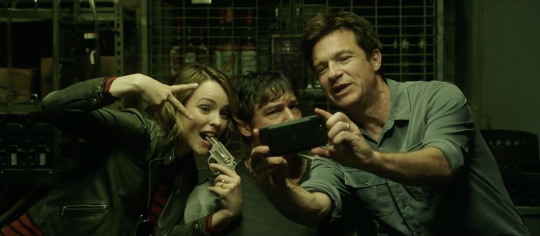
37. Game Night (John Francis Daley and Jonathan Goldstein)- It gets a little tidy and full circle for my taste, but this movie has some great laughs while being a good example of a film that nails both the characters' "want" and the characters' "need." Rachel McAdams is winning, and Jesse Plemons steals all of his scenes.
Game Night also has way more of a filmic identity than one might expect, since it doubles as a sort of Fincher parody. Besides Cliff Martinez's insistent electronic score and some CGI-for-no-reason establishing shots, Daley and Goldstein borrow the auteur's desaturated palette, locked-down camera, and narrow light range. There's even an elaborate one-r. The visuals elevated a premise that had the potential to be really dopey.
36. First Man (Damien Chazzelle)- I think this is exactly the movie Chazelle wanted to make, but, to match my expectations or his filmography, it's not quite good enough. Cool to the touch, though anything else would be antithetical to who Armstrong was. In the shape of suspense, but with an outcome that is obviously never in doubt. Flipping to the IMAX ratio the second the crew docks onto the moon is a cool trick, but it's as innovative as things get.
The cast is game. Gosling's fastidious brooding resists any of his Movie Star charm but still holds every scene, and the framing of Armstrong's motivation works very well. Foy's reading of "a bunch of boys" is about to become a t-shirt. Kyle Chandler and Jason Clarke and the suddenly mature Patrick Fugit all get their moments. The final scene places the film into the Chazelle tradition of people whose calling is greater than even their most transcendent relationships, and a protest sequence is a welcome break from the eraser-streaked perfectionism.
I'm sorry that I wanted Apollo 13 instead of a hipper Apollo 13.
35. Spider-Man: Into the Spider-Verse (Bob Perischetti, Peter Ramsey, Rodney Rothman)- Within the course of one year, we got two possible solutions for the "problem" of inspiring but self-serious origin stories. At the beginning of the year, Black Panther mastered the form and presented it so solidly that it couldn't be argued against. Spider-Man: Into the Spider-Verse goes the other way, so impressionistic that the final sequence is people flying through abstract shapes and colors, so irreverent that a character cuts someone off mid-sentence as he says, "With great power comes..." Though I would have trouble explaining the film, all of the dimensional comings-and-goings make sense in the moment, and it's easily the funniest Marvel movie ever made.
Maybe purposefully, it is overstuffed though. Six different iterations of Spider-Man is enough to juggle; I definitely didn't need a cadre of villains that was even less defined. I have to admit, even though I couldn't tell you what to cut, I was exhausted by the end, even if I was huffing and puffing fresh air.
34. Boy Erased (Joel Edgerton)- Many characters do bad things in this movie, but they're people trying to help and doing their best, justifying the pain that they're causing. This is a film that easily could have been drawn in caricature, and it never is. It does, however, draw the characters as fairly as they deserve, so the Joel Edgerton gay conversion therapist does wear bad ties and pronounce some words incorrectly. The Russell Crowe character, especially in the powerhouse final scene, is more complex and real, at least if I'm to judge by my own father, who has disturbingly similar moral authority and power moves k thx bai.
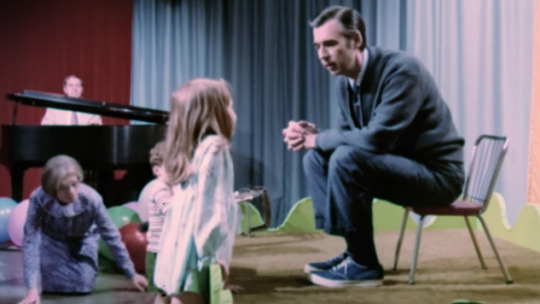
33. Won’t You Be My Neighbor? (Morgan Neville)- This one is more cohesive than 30 Feet From Stardom, but these Morgan Neville docs are sometimes too slick for their own good. If you've never made the "jerking-off motion" with your hand, then you'll be tested when he asks his subjects to close their eyes and imagine someone special to them.
That's not to say that the nearly pornographic reverence of Fred Rogers is not deserved or effective. And one of the most daring notes of the film is the suggestion that, in our hostile times, Rogers's message might not have stuck. The jabs at Trump aren't overplayed, but the president is sort of a pall over the entire film. When Rogers says, "The most essential things in life are invisible," it's hard not to imagine the person on our TV daily who is the antithesis of that idea.
32. Hearts Beat Loud (Brett Haley)- This is a heartwarming movie that ends on a high note with solid music. (Important because, if the music that the father and daughter made had been bad, the whole thing would have fallen apart.) Occasionally, it falls into that ensemble problem of "Good news: We got Ted Danson. Bad news: We have to find something for him to do." And it's a weird sideways ad for Spotify. But if I gave Begin Again three stars, then I have to kick this Once-core entry up to three-and-a-half.
If I may, though, I would like to analyze a recommendation that Offerman's record store owner makes to Collette's character. Since she's buying Dig Me Out by Sleater-Kinney, he puts her on to Animal Collective's Merriweather Post Pavilion, an album she has not heard of. Which is absurd. Forget that Animal Collective should not be recommended to any woman ever. Any person who knows Sleater-Kinney also knows Animal Collective. She would have heard of them if only because they would be a bad match for someone who likes Sleater-Kinney. But here he is all like, "Check out 'My Girls'--killer song." You're going to recommend the lead single, fam? You're not even going to go out on a limb and push "Bluish"? No wonder your store is shutting down if you're pushing free folk/art-punk onto riot grrls.
31. Western (Valesta Grisebach)- While I was watching Western, I can't say I was having too much fun. It seemed like an adequate story told in a patient, austere way. But in the days since then, I haven't been able to get it out of my head. The way that Grisebach gets so much out of non-professional actors, the way that each character seems to exist not so much as a person but as a totem for something like aggression or labor or exploitation or occupation. Like few other movies--though Beau Travail comes to mind--it's a portrait of masculinity that seems really resigned about its conclusions.
30. American Animals (Bart Layton)- I worry about the potential Boondock Saints effect of this movie: Do I want to be in the same number as the college dorm crew attracted to it only for its style? Is it only style? I don't think it adds up to much ultimately.
But it does have style, and it's way too fun of a caper flick to resist. It presents an interesting bridge in Bart Layton's career, from non-fiction that is a bit too fictional to fiction that is a bit too factual. The segments with the real people involved in the heist serve as decisive punctuation to the florid sentences of the narrative. I also appreciated that the film didn't dwell too much on the trial, since we know exactly where the boys faltered and what evidence did them in.
29. The Land of Steady Habits (Nicole Holofcener)- I loved the rich characterization of the first half, which resists hand-holding as it plops the viewer into a post-divorce setting that is familiar but specific. The film bounces off into tangents from there, some of which are great, but Edie Falco seems to draw the short straw. There are three actors on the poster--weird-voiced Ben Mendelsohn, Thomas Mann, and Falco--but her character is left undeveloped, a bit unfairly, as the proceedings favor the men. The film is still another ground-rule double for Holofcener, a filmmaker who gives the impression that she has no idea what a ground-rule double is.

28. Private Life (Tamara Jenkins)- I don't know anything about Tamara Jenkins's personal life, but there's no way that the details and emotion of the central couple's infertility don't come from her own pain. That frustration and obsession take center stage, and we get filled in with the rest of the details patiently as the film goes on. I don't think we even know what Giamatti's character does for a living until forty-five minutes in, and that's okay. The movie cares more about the supporting characters than I did, but I appreciated the lived-in realism of an apartment with books filling up the fireplace.
27. Flower (Max Winkler)- Although I didn't believe Zoey Deutch as a seventeen-year-old, I was impressed by this script, which moves slowly until it doesn't. I guess "Flower" is good branding since there doesn't appear to be a movie called that already, but I kind of wish this had just been called "Erica." It builds that character carefully, plants her in an impossible situation, then unleashes hell upon her.
An advantage of a movie with teenage characters is that they don't necessarily have to make the most logical decision in a given moment, so even when these characters are being dumb, they're being true to themselves. As the most prominent Zoey Deutch stockholder in North America, I actually thought about bumping this up an extra half-star.
26. Leave No Trace (Debra Granik)- Leave No Trace is partly about how existing outside of society can be as much of a contrivance as buying in, but the way the movie delivers that message is less ham-fisted than my description due to the intense performances at the center. Ben Foster, uncharacteristically restrained here, reportedly worked with Debra Granik to excise 40% of his dialogue, and that choice speaks volumes about the trust the film has for the audience in limiting the exposition.
The only thing holding me back was how exclusively internal the father-daughter story is. Unlike Granik's Winter's Bone, which functions as both a (similarly compassionate) coming-of-age story and a race-against-the-clock thriller, Leave No Trace is tracking only emotional growth. Will and Tom aren't headed anywhere in particular, which is part of the survival-versus-living point. But, you know, get you a Debra Granik movie that can do both.
25. Eighth Grade (Bo Burnham)- Socially terrifying when it isn't being effortlessly funny. Sometimes the protagonist is downright frustrating, which the film doesn't shy away from, but the vulnerability of Elsie Fisher's performance grounds everything around it. Besides nailing adult condescension, Burnham's script works because the big social disaster is always averted until it suddenly isn't, and that's when the moment hits the hardest. Somewhere in the back of my mind though, I kept thinking that perceptive realism is easy to do if that's your only goal. To quote the kids: "Some shade."
I spent most of the movie thanking God that YouTube channels didn't exist when I was thirteen.
24. Three Identical Strangers (Tim Wardle)- I'll be the millionth person to write "truth is stranger than fiction" with regard to this movie. And sometimes having no idea where a movie will go is enough.
23. Green Book (Peter Farrelly)- When a dramatic director makes a comedy, it often feels self-conscious and overt. I'm thinking about Von Trier's The Boss of It All, in which the technique is more important than any audience joy or release. Or Michael Haneke explaining tirelessly why he thinks Happy End is "actually a comedy." Unsurprisingly, the results work a lot better when a comedy director of twenty years decides to go more serious. He knows what audiences want, he already understands how to wring tension out of each scene, and all he needs is the right subject.
The last item is where Green Book suffers. In the end, this is still a movie in which a White guy learns not to be racist. The first third, there seemingly to insist that Tony is the main character, is shaggy. I would wager the men don't get into the car inside of forty minutes. But once we're on the tour? Man, is this a crowd pleaser. The men's respect for each other grows gracefully, and the film's proud sentimentality powers its best moments as they fly by at a clipped pace. I had given up on Farrelly after Hall Pass, which felt amateurish, so a work of such professionally manicured (manufactured?) emotion was a shock.
On a different note, are any of you interested in a thousand words on Linda Cardellini's posture?
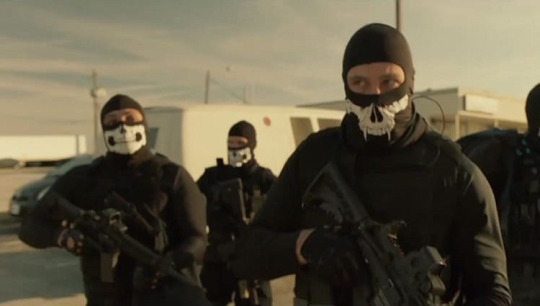
22. Den of Thieves (Christian Gudegast)- Despite the February release date, a director with no track record, and the most #basic studio lead there is, Den of Thieves is a caper film as sprawling as it is humane. Even Potato-face Butler is perfect for his role.
I watched the unrated version, which should be called the "depressing version," since I know exactly what was cut. (Hint: The wordless scene of Butler's jilted family ignoring him when he sees them in the grocery store, not anything from the shoot-out.) There's a spot where I would end the movie, and it's way before the Keyser Soze epilogue, but this was a welcome surprise for me. The movie seems to find its star in O'Shea Jackson, Jr. as it goes, and I completely agree. Many more like this please.
21. The Front Runner (Jason Reitman)- Reitman starts with a complicated oner that cranes up and down, zooms in and out of new characters, and times itself perfectly to catch snatches of conversations about "how can you even lay this much cable?" And in all of its Altman-esque indulgence, it's kind of the movie in a nutshell. Something simple--a scene shot with one take--commenting on how damned hard it is. What seems like a straightforward thesis moves at a breakneck pace with a game ensemble until you realize that it was all more complicated than it seemed.
Hugh Jackman has the challenge of playing someone essentially unknowable, but he has an amazing moment in the first third. On the chartered boat called Monkey Business--such a bad look, dude--Gary Hart is composed and dignified until a woman we don't see* sits down across from him, and his whole affect changes. His guard drops, and he seems absorbed by her, giggly. We can't hear what he's saying, but he's asking her about herself and joking about himself. Both or one or neither of those personalities is the real guy. The Front Runner is a movie about a tragic Great Man, and they're always described as if they can't help themselves, as if they're fighting their demons until the magic moment when they aren't. Jackman made that magic real for me when Hart's personality fell out.
20. The Ballad of Buster Scruggs (Joel Coen and Ethan Coen)- Patently uneven and bizarrely sequenced, The Ballad of Buster Scruggs doesn't stack up to the Coens' major works--though it demands another viewing. I did think, in all of its bleak absurdism, that it belongs in their neighborhood.
To me, there's a dichotomy that most of the brothers' films trace. We're all doomed, but the force that does us in is sometimes fate (A Serious Man, Inside Llewyn Davis, The Hudsucker Proxy, No Country for Old Men) and sometimes the stupidity of other people (The Big Lebowski, Blood Simple, Burn After Reading, Miller's Crossing). This new movie seems to start with the latter, waver sometimes in the more interesting middle stories when Zoe Kazan and Tom Waits break my heart, then end up at the former. Tracking such a thing in miniature can be really instructive.
19. The Tale (Jennifer Fox)- If you can look past Common's goofy voice and the more afterschool special aspects of this movie, then you can realize that it should actually, as disturbing as it is, be an afterschool special. It spins its wheels sometimes, but the questions that this movie asks about memory and abuse are invaluable. Presenting a downright shocking portrayal of grooming and secrecy, it avoids easy answers and over-sympathizing with the protagonist all the way through. (Especially notable because the character is "Jennifer Fox," and the director is Jennifer Fox.)
Laura Dern remains Laura Dern, but I loved Jason Ritter in this. Exactly because he has been in a hundred failed sitcoms, he is terrifying here as a devilish knock-off of the type of guy approachable enough to be on TV.
18. Paddington 2 (Paul King)- At first, during the extended introduction, I was worried that Paddington 2 was falling prey to the curse of the sequel: more, not better. But as each family member pays off what we learned about him or her in the introduction during a sprightly train setpiece that owes more than a little to Keaton, I realized that I shouldn't have doubted the Paddington empathy machine. This one carries over the humor and sweetness but goes even harder on the pathos in its attempt to convince us to have good manners and care about the people around us. I'm not sure any other movie this year hit me harder than when the Browns don't show up for their weekly meeting at the jail.
Hugh Grant, an actor who always seems to be having fun, has never seemed as if he is having more fun.
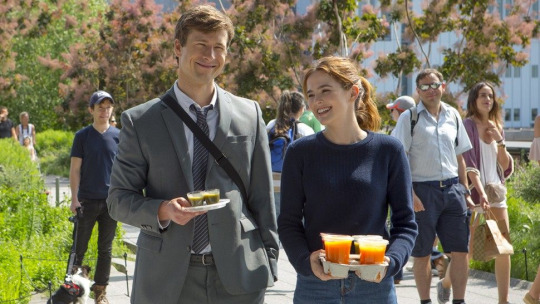
17. Set It Up (Claire Scanlon)- I guess I believe in true love now.
16. Blindspotting (Carlos Lopez Estrada)- The stylized climax is going to be polarizing, but I thought it was a heightened, artful moment whose seeds had been sown throughout. The film meanders, but its angles on subjects like gentrification and probation and identity show tenderness and openness, and Estrada's visual energy recalls early Spike Lee or Jarmusch or Aronofsky. It's worth seeing if only for its fresh sense of place.
The two leads play off each other especially well. If Daveed Diggs is the fourth lead or whatever of Hamilton, then I guess I finally have to see it.
15. Incredibles 2 (Brad Bird)- Incredibles 2 is a good example of a sequel rhyming with the original in a way that doesn’t feel like a retread. Accidentally topical in its subtext about just rule of law, the film hits upon some of Brad Bird’s ideas of exceptionalism and hope for the future while being slightly more cogent in that messaging than the original. (Slightly. The villain problem is still there. If superheroes are already illegal, then why employ and promote them at all if your goal is to make them even more illegal?)
This entry is a bit more overstuffed, less timeless, and less funny than the original. There’s nothing on the level of “Honey, where is my super suit?” which I still say to my wife fourteen years later. But the fight choreography and the textural animation take advantage of the gap in between films. The Paar family dynamic is altered only slightly, but it’s enough to re-invent the proceedings. Violet has more confidence in herself, Dash is more in control of his powers, and it’s the, yes, thicc Elastigirl who is working solo this time. Especially in the opening sequence, we see how each character’s skills complement the others’. If Finding Dory is the bar for “sequels to Pixar movies that didn’t need sequels,” then Incredibles 2 leaps over that bar.
14. Chappaquiddick (John Curran)- "We need to tell the truth. Or at least our version of it."
After the Kennedy Curse claimed JFK Jr., it seemed as if the culture reached a saturation point with Kennedy coverage. Aside from the occasional "Look who's dating Taylor Swift," we gave them their space. Who would have thought that twenty years later would be the perfect time to dust off the coldest case in the dossier?
See, now that we're having a national conversation about who gets the breaks, there's a little bit of extra weight lent to a scene of Ted Kennedy waiting for a sheriff he summoned as he drafts a statement at that absent sheriff's desk. A sheriff who then helps Kennedy to escape through a backdoor lest he answer any untoward question about his manslaughter. The film is delivered with an even pitch--especially the Jason Clarke performance that could have been overdone--but it makes no mistake about its real subject: privilege.
The attempts to keep Kennedy safe become more brazen as the film goes on, and each dodged consequence--getting Teddy's driver's license renewed on the low, for example--is balanced by Ed Helms's desperate performance as a voice of integrity. In all of the best tragedies, we know what's going to happen in the end. All along, the Kennedy Curse was that they are not like the rest of us.
13. Love, Simon (Greg Berlanti)- Can we all agree that an anonymous gossip web site for a high school is a bad idea? And that, though the film doesn't pursue this angle, the vice principal is the one maintaining it?
This propulsive, observant, and witty movie is an outright pleasure from beginning to end. Hocking spitballs at its PG-13 rating, its greatest strengths are having the courage to get dark and having the wisdom to give every supporting character his or her own moment.
0 notes